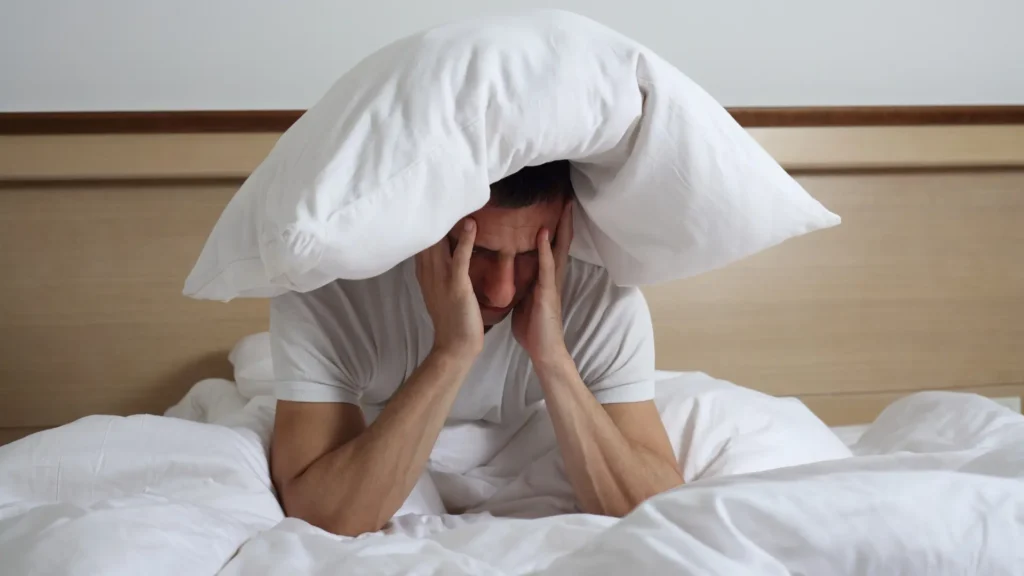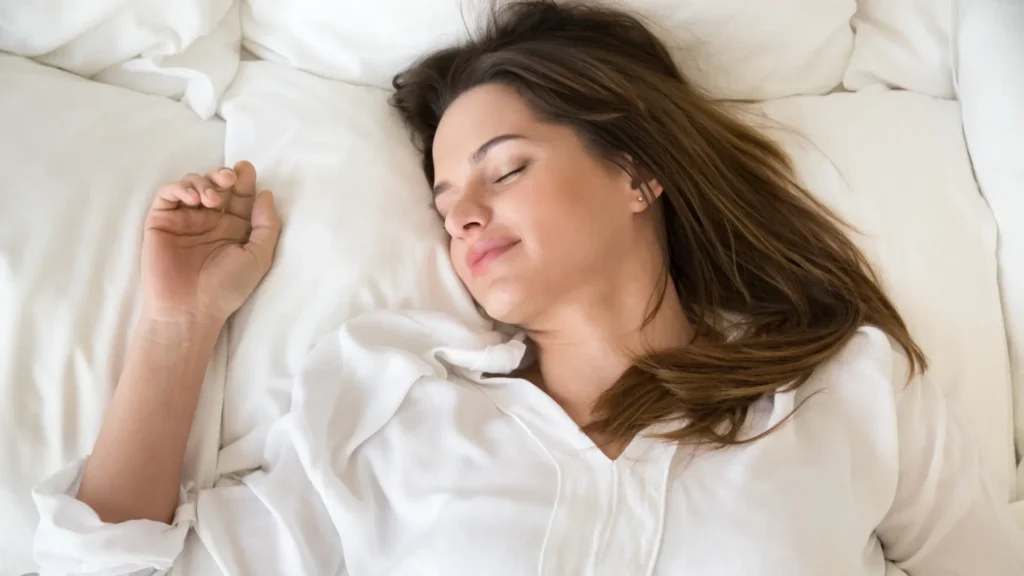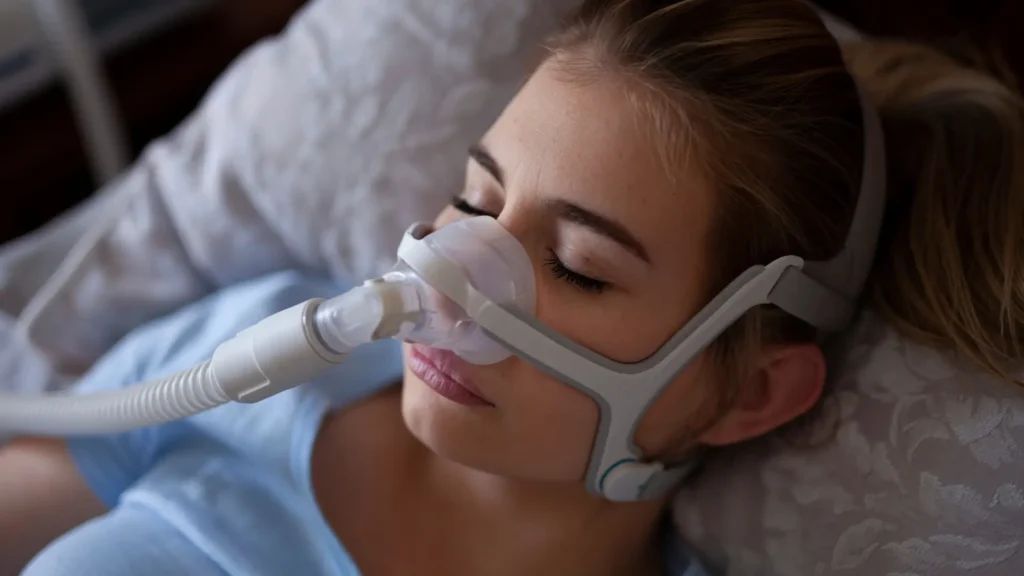Picture a ship navigating through a stormy sea, its crew battling against the relentless waves and howling winds. The storm, in this case, represents the traumatic experiences that can lead to post-traumatic stress disorder (PTSD). As the ship emerges from the tempest, battered but still afloat, a new challenge arises—an invisible anchor dragging beneath the surface, slowing the ship’s progress and threatening to pull it under. This anchor is sleep apnea, a condition that often goes hand in hand with PTSD, silently wreaking havoc on the lives of those affected.
PTSD, a mental health condition that can develop after experiencing or witnessing a traumatic event, affects millions of people worldwide, with a particularly high prevalence among veterans and first responders. The effects of PTSD can be far-reaching, impacting not only mental well-being but also physical health, including sleep. Sleep disturbances are a common complaint among individuals with PTSD, and recent research has uncovered a strong link between PTSD and sleep apnea.
In this article, we will talk about PTSD sleep apnea, examining how these two conditions interact and exacerbate each other. We will delve into the mechanisms behind this connection, the impact of comorbid PTSD and sleep apnea on overall health and quality of life, and the importance of proper diagnosis and treatment.
Join us as we chart a course through this often-overlooked aspect of PTSD and discover how addressing PTSD sleep apnea can be a vital part of the journey towards recovery and smoother sailing ahead.
How does PTSD cause Sleep Apnea?

Sleep apnea and post-traumatic stress disorder (PTSD) often occur together. Studies show that up to 95% of people with PTSD also have sleep apnea, which is much higher than in the general population.
Sleep apnea and PTSD seem to make each other worse in a two-way relationship:
| How Sleep Apnea Affects PTSD | How PTSD Affects Sleep Apnea |
|---|---|
| Sleep apnea disrupts REM sleep, which may worsen nightmares and other PTSD symptoms. | PTSD causes hyperarousal and trouble sleeping, which can lead to more nighttime awakenings from sleep apnea. |
| Untreated sleep apnea is linked to worse PTSD symptoms and outcomes. | More severe PTSD is associated with a higher risk and severity of sleep apnea. |
Researchers think this link between sleep apnea and PTSD involves:
- Sleep fragmentation and poor sleep quality
- Disrupted breathing and less oxygen during sleep
- Changes in brain chemicals and stress response
However, the exact ways sleep apnea and PTSD are connected are still not fully clear. More research is needed to better understand this complex relationship.
It’s important for people with PTSD to be checked for sleep apnea, regardless of their age or weight. Sleep apnea is very common in people with PTSD, even in younger veterans who may not have the typical risk factors like older age or obesity.
Treating sleep apnea, usually with a CPAP machine or other therapies, can help improve both sleep apnea and PTSD symptoms. People with PTSD who use CPAP regularly report better sleep and reductions in PTSD symptoms like anxiety and nightmares.
However, many people with PTSD have a harder time adjusting to and regularly using CPAP. Nightmares and anxiety can make it challenging to wear the CPAP mask. Because of this, people with PTSD may need extra support and alternative treatment options to manage their sleep apnea successfully.
In summary, sleep apnea and PTSD have a strong, bidirectional relationship. PTSD makes sleep apnea more likely and severe, while untreated sleep apnea worsens PTSD symptoms and outcomes. Screening for and treating sleep apnea should be a key part of care for people with PTSD to improve both conditions and overall health.
Impact of Comorbid PTSD and Sleep Apnea

When PTSD and sleep apnea team up, it’s like a perfect storm for your health and well-being. These two conditions can really amplify each other’s symptoms, making life a lot tougher than it needs to be.
For starters, when you’re dealing with both PTSD and sleep apnea, you’re more likely to have worse symptoms across the board. We’re talking about more severe PTSD symptoms, like intense nightmares and flashbacks, and more disruptive sleep apnea episodes throughout the night. It’s a double whammy that can leave you feeling exhausted and on edge during the day.
But the impact goes beyond just feeling tired and cranky. Comorbid PTSD and sleep apnea can also take a serious toll on your overall health. Studies have shown that having both conditions puts you at a higher risk for developing other health problems, like heart disease, diabetes, and even certain types of cancer. It’s like your body is working overtime, trying to cope with the stress of PTSD and the strain of sleep apnea.
And let’s not forget about the impact on your daily life. When you’re constantly battling fatigue, irritability, and difficulty concentrating, it can be tough to keep up with work, relationships, and other responsibilities. You might find yourself withdrawing from social situations or struggling to enjoy activities you once loved.
The good news is that treating PTSD sleep apnea can make a world of difference. By addressing the root causes of your sleep problems and working through the emotional challenges of PTSD, you can start to feel like yourself again. It’s not always an easy journey, but with the right support and treatment plan, you can reclaim your health and your life.
So if you’re dealing with PTSD and suspect you might have sleep apnea, don’t hesitate to reach out for help. Your doctor can guide you through the diagnosis and treatment process, and connect you with the resources you need to get back on track. Remember, you don’t have to face this alone – there’s always hope for a better night’s sleep and a brighter tomorrow.
PTSD Sleep Apnea Diagnosis
Diagnosing both PTSD and sleep apnea is important, as the two conditions often co-occur and can worsen each other’s symptoms. However, sleep apnea is frequently underdiagnosed in people with PTSD, possibly because the more typical PTSD symptoms like insomnia and nightmares overshadow the signs of sleep apnea.
To diagnose sleep apnea, a doctor may recommend a sleep study, either in a lab or at home. During the study, equipment monitors breathing, heart rate, and other vital signs during sleep. This helps determine if sleep apnea is present and how severe it is.
Screening for sleep apnea should be a standard part of care for people with PTSD, regardless of age or weight. One study found that 69.2% of younger veterans with PTSD were at high risk for sleep apnea, even though they didn’t have the typical risk factors like older age and higher BMI.
PTSD Sleep Apnea Treatment
Treating both PTSD and sleep apnea is crucial for improving symptoms and overall quality of life. The most common treatment for sleep apnea is continuous positive airway pressure (CPAP) therapy, which involves wearing a mask during sleep that provides a steady flow of air to keep the airway open.
Research suggests that consistent CPAP therapy can not only improve sleep apnea symptoms but also reduce PTSD symptoms like anxiety, depression, and nightmares . One study found that CPAP adherence was associated with a 75% improvement in PTSD symptoms.
However, people with PTSD may have more difficulty adjusting to and regularly using CPAP due to discomfort with the mask, claustrophobia, and nightmares. Providing extra support and considering alternative sleep apnea treatments may be necessary.
Treating PTSD sleep apnea often involves a combination of therapy, such as cognitive-behavioral therapy and exposure therapy, and medication. Improving sleep hygiene, like following a consistent sleep schedule and creating a relaxing bedtime routine, is also an important part of PTSD sleep apnea treatment.
The key is to address both PTSD and sleep apnea together for the best possible outcomes. By working closely with healthcare providers and exploring various treatment options, people with PTSD sleep apnea can improve their sleep, reduce their symptoms, and enhance their overall well-being.
What is the VA Rating for Sleep Apnea Secondary to PTSD?
When sleep apnea is determined to be secondary to (caused or aggravated by) service-connected PTSD, the VA assigns a disability rating based on the severity of the sleep apnea symptoms. The VA rates sleep apnea under the Schedule of Ratings for the Respiratory System, Diagnostic Code 6847.
The VA assigns the following ratings for sleep apnea secondary to PTSD:
- 0%: Sleep apnea is asymptomatic, with documented sleep disorder breathing events.
- 30%: Persistent daytime hypersomnolence (excessive sleepiness).
- 50%: Requires use of a breathing assistance device such as a continuous positive airway pressure (CPAP) machine.
- 100%: Chronic respiratory failure with carbon dioxide retention, cor pulmonale, or requires a tracheostomy.
The most common rating for sleep apnea secondary to PTSD is 50%, as many veterans with this condition require the use of a CPAP machine to manage their symptoms. To qualify for this rating, you must show that your doctor has prescribed a CPAP or similar device to treat your sleep apnea.
It’s important to provide evidence that clearly demonstrates the severity of your sleep apnea and its connection to your service-connected PTSD. This may include:
- A sleep study confirming the diagnosis of sleep apnea.
- Medical records showing the prescription and use of a CPAP machine.
- A nexus letter from a medical provider explaining how your PTSD caused or aggravated your sleep apnea.
- Lay statements from you and others describing the impact of sleep apnea on your daily life.
Winning a 50% rating for sleep apnea secondary to PTSD can provide significant benefits, including compensation and coverage for necessary medical equipment and treatment. However, the claims process can be challenging, so it’s essential to gather strong evidence and consider seeking assistance from a Veterans Service Organization or an experienced attorney.
Don’t Suffer in Silence

If you or a loved one is struggling with PTSD and suspect that sleep apnea may also be a problem, don’t suffer in silence. Reach out to a healthcare provider who can help you get the diagnosis and treatment you need. Remember, seeking help is a sign of strength, not weakness.
By taking action and addressing both PTSD and sleep apnea, you can improve your sleep, reduce your symptoms, and enhance your overall quality of life. It may not be an easy journey, but with the right support and treatment, a better future is within reach. Don’t wait – take the first step towards healing today.
Today we talked about PTSD Sleep Apnea. Here are some other articles you might be interested in:
How to Identify and Treat Common Sleep Disorders
What is the point of a Sleep Diary?
What is PTSD Sleep Apnea?
7 Surprising Sleep Foods That Will Help You Sleep Better
7 Health Benefits of Sleeping Naked



